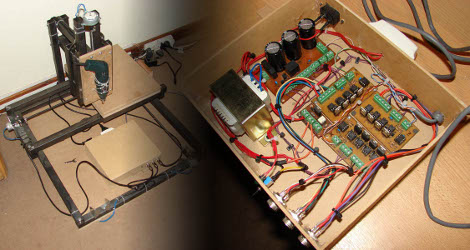
[lucassiglo21] let us know about his finished 3 axis CNC (Translation via Google). While home CNCs are nothing new, we really liked this masterpiece. The CNC is entirely custom, from the electronic control boards (connected to a PC via parallel port) to the physical mill (with an end result of 30x30x15cm workable area). Our favorite part is the use of screw/band clamp zip ties to hold the Dremel – a true showing of hacker geekyness. For those who haven’t seen a CNC drill a circle before (and honestly, who hasn’t?), check a video after the break.

















